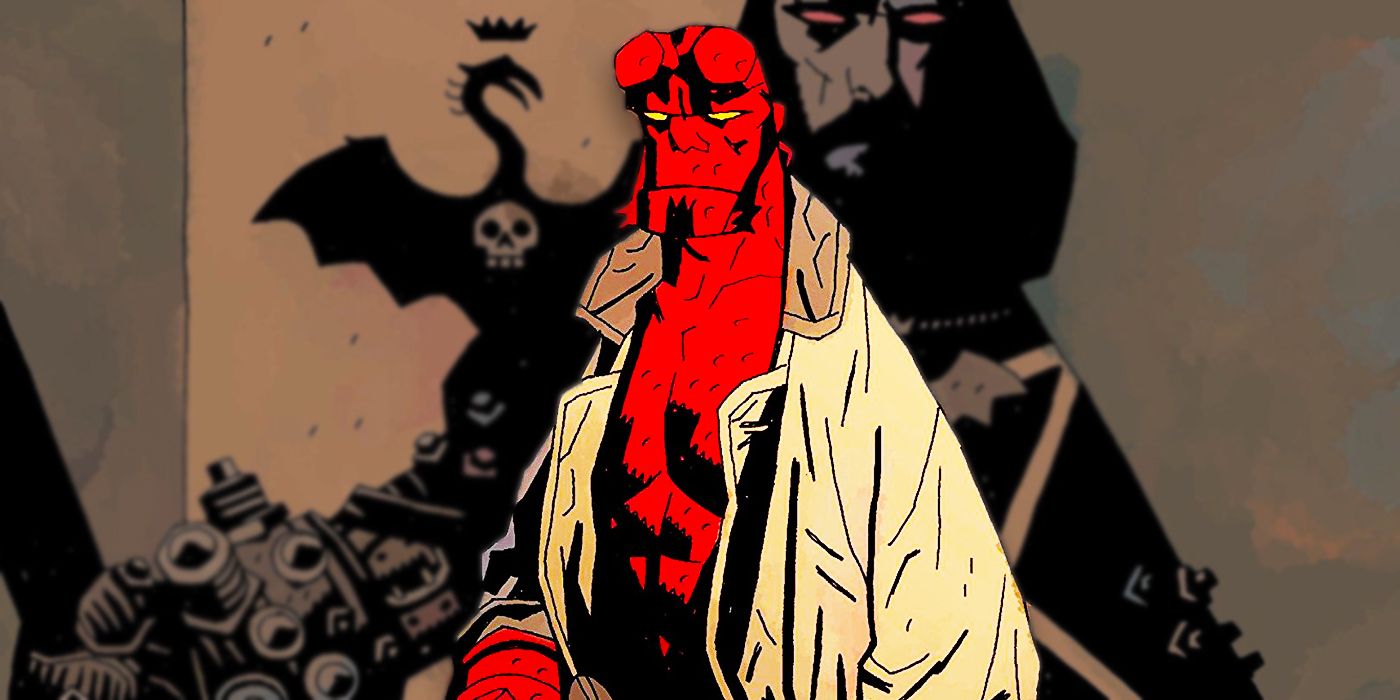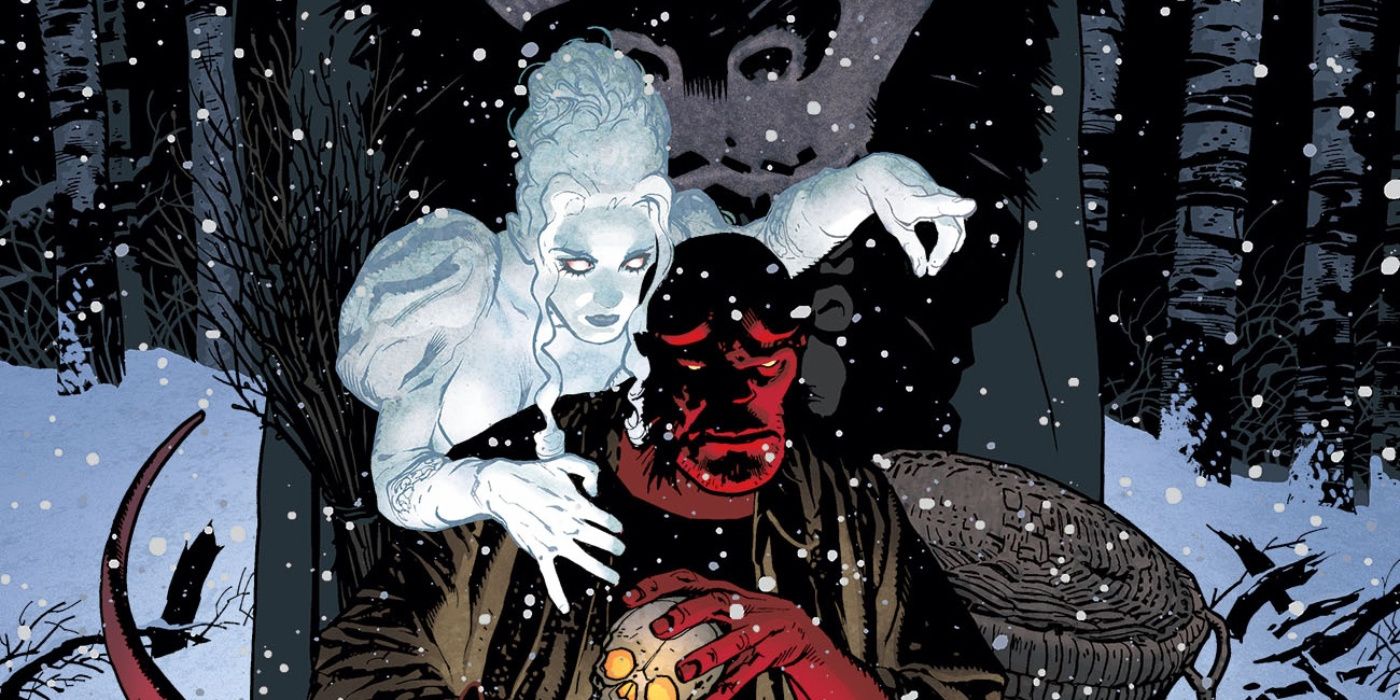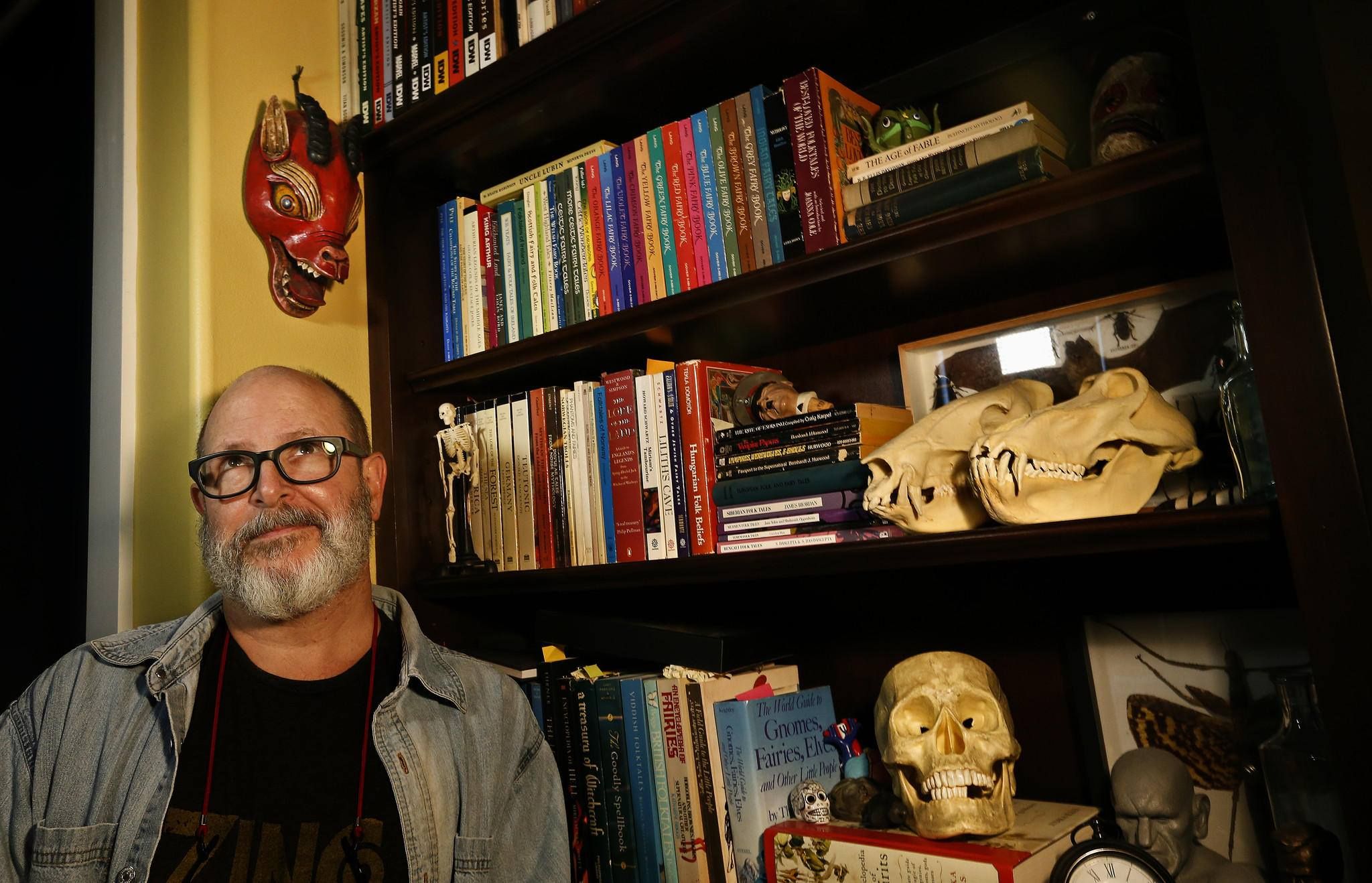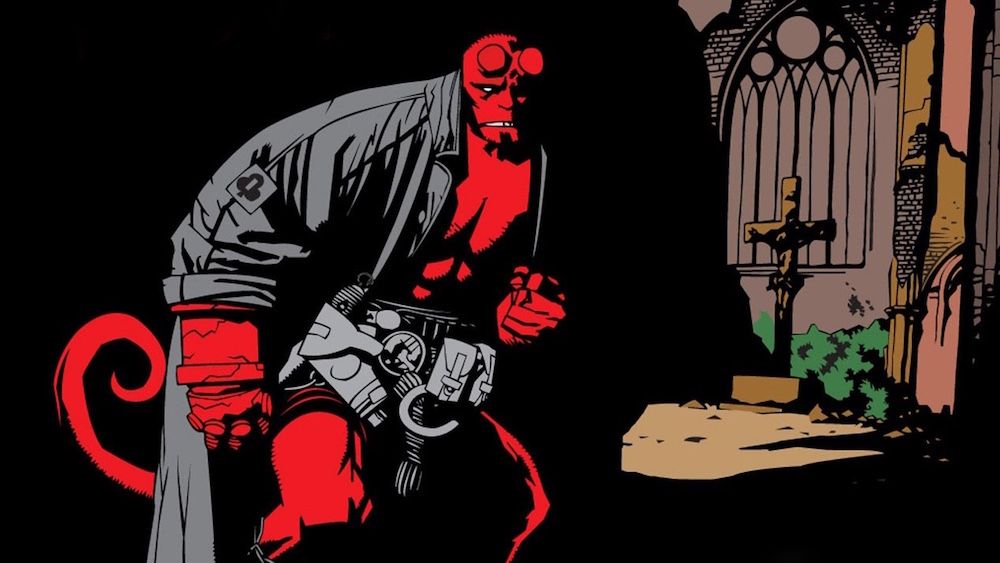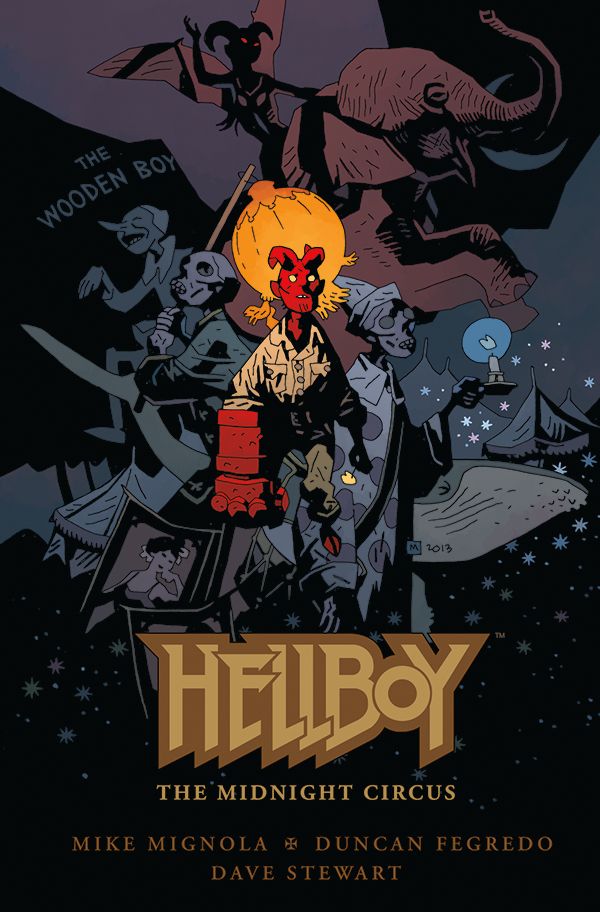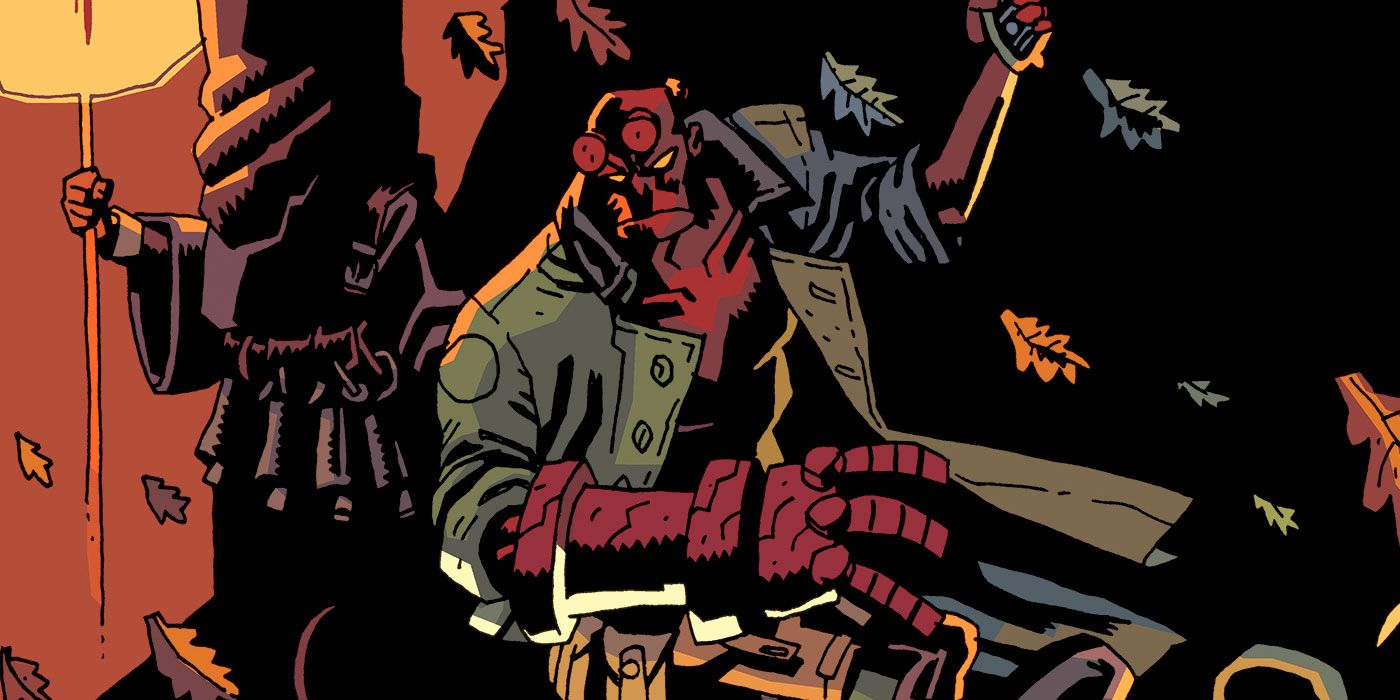Comic book fans, perhaps more so than any others, love determining the best of something. However, as fun as it may be to debate, sometimes there can really only be one true answer. When it comes to the question "What's the best horror comic of all time?" the answer is so simple it's obvious: Hellboy.
RELATED: Mike Mignola Is Already Ready For Another Hellboy Movie
There are other contenders, of course, from Naoki Urasawa's Monster to the Hellblazer storylines that ran at the same time, there are countless horror books out there, and they all have their merits. But make no mistake, Mike Mignola's signature creation is the one to beat.
Other series without a singular creative voice can ebb and flow in quality. Hellblazer, for example, has more than its fair share of duds in-between all-time classics. But Hellboy never stops being good. The reason behind that consistency is a united core. Writer Mike Mignola, color artist Dave Stewart and artist Duncan Fegredo, among others have always provided a foundation around which to build Hellboy stories.
Accordingly, there's a lot of Hellboy to get through; though, to be clear, we're talking about the main Hellboy series, including Hellboy in Hell, but not spin-offs like B.P.R.D. But now that Dark Horse has bundled the complete series in six chronological omnibuses -- four collecting the core story, two collecting the various Hellboy short stories -- it's easy to learn why.
A Core Writer
Mignola has been involved in scripting just about every core Hellboy story and drawing a majority of his appearances, too. Yes, John Byrne scripted Seed of Destruction, but Mignola plotted it. It's rare in just about any medium for a character's creator to stick around and keep telling their story; for comics, especially so.
On top of that, he's remained active in other ways, overseeing the broader "Mignola-verse" at Dark Horse, as well as working on each of the Hellboy films, including the upcoming reboot. But let's talk about his writing.
RELATED: Hellboy Reboot's NYCC Trailer Leaks Online
There's a formula to most Hellboy stories: (1.) There's a creepy thing, sometimes from mythology; sometimes from fiction; sometimes made up; (2.) Hellboy -- sometimes alone, sometimes with his pals like Abe Sapien -- has to investigat; (3.) Hellboy fights the creepy thing.
And you know what? That formula works. Mignola fully fleshes out each antagonist before the inevitable punch-up. Sometimes he puts a neat metafictional spin on it, like he does in the story "Makoma, Or a Tale Told by a Mummy in the New York City's Explorer's Club in 1993." It tells a creation myth with the titular hero simply drawn over with Hellboy.
But even with that formula, Mignola weaves it all together to form a tight, cohesive epic that's as satisfying as long-form narratives like Love & Rockets or Usagi Yojimbo.
NEXT PAGE: The Fine Art of Consistency (And Fun)
Consistent, Defined Art
The first thing you notice when you pick up a Hellboy comic is how different it looks from anything else. Alan Moore once described Mignola's artwork as "German expressionism meets Jack Kirby," and there's something to that. To read a story like "The Chained Coffin" or "Heads" is to see a surreal hybrid of woodcuts, Alex Toth and Frank Frazetta.
It's a singularly unique aesthetic that, when coupled with the colors of Stewart and others, immediately pops off the page be it print or digital. The amazing thing is, Mignola's collaborators know how to channel that for themselves. Take, for example, the 2013 original graphic novel, The Midnight Circus, written by Mignola, with art by Duncan Fegredo.
Duncan Fegredo manages to perfectly capture Mignola's designs of a kid Hellboy, his adoptive father Trevor Bruttenholm, and other BPRD folks, and puts his own Mignola-esque spin on the looks of characters that Hellboy encounters in the supernatural circus.
Other stories, like 2010's "Hellboy in Mexico," illustrated by Richard Corben, ape Mignola's linework so precisely that you'd never realize without close inspection you weren't looking at Mignola art.
RELATED: Hellboy Star Says Film is More About Horror, Less About Superheroes
The key to that of course is Stewart, who in each and every yarn shows just why he's won those nine Eisner Awards. His coloring recalls both the pop dynamism of Kirby and the super-flat bombast of visual artist Takashi Murakami.
Given that he's colored the majority of the "Mignola-Verse" for decades, it might be said that Stewart is really the shining beacon that sits atop the quality lighthouse of that fictional universe.
It's Just So Fun
Anyone who has tried reading old-school pulp fiction or Victorian-era penny dreadfuls has probably noticed that a lot of the prose is florid, melodramatic and endlessly descriptive. There's a reason for that of course -- Robert E. Howard, Clark Ashton Smith and the rest were all getting paid by the word -- but it tends to rob the stories of their power.
Because comics are visual, and because Mignola knows when to get out of the way and let the art do the talking, Hellboy doesn't have that problem. Thus, it's free to muck around in as many modes or flavors of story as it likes, while still being grounded in horror.
RELATED: Hellboy Reboot Arrives With NYCC-Exclusive Footage
Improbably, the comedy sci-fi of Mignola and Kevin Nowlan's "Buster Oakley Gets His Wish," and the weird fiction feel of 2008's "In the Chapel of Moloch" (along with wider epics like "Conqueror Worm" and the Celtic/Arthurian-soaked The Wild Hunt) inform the DNA of Hellboy. But at the same time, it is distinctly its own series with its own footprint.
As such, Hellboy has and continues to establish itself as a landmark horror creation in any medium, but while it can be imitated, it can never be duplicated, and its position as comics' best horror book continues to stand completely uncontested.

